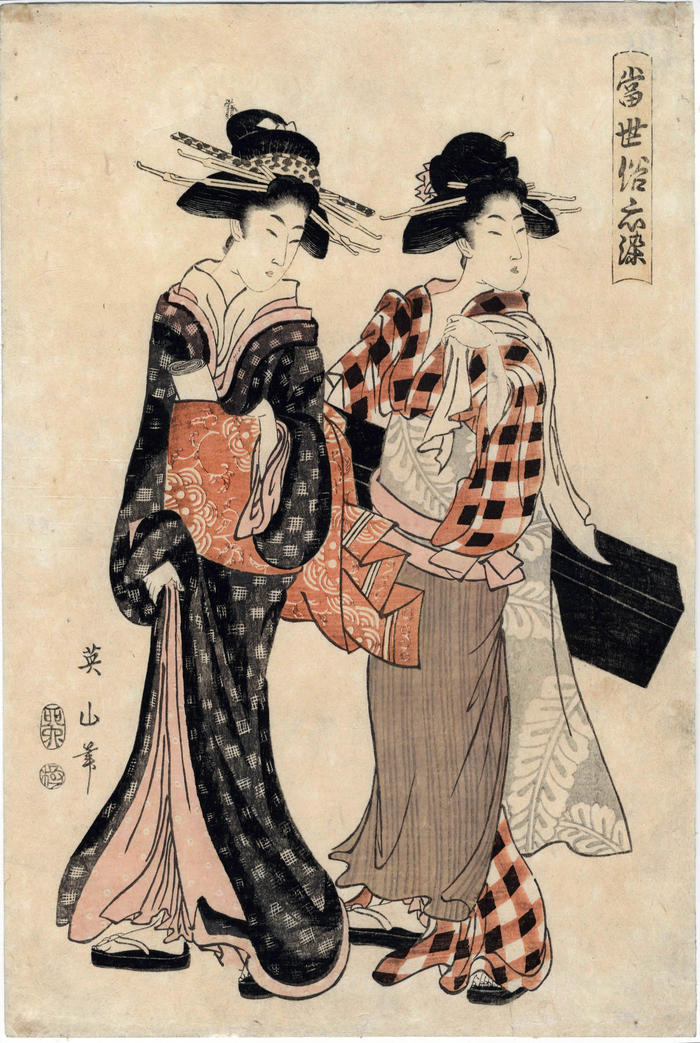Kikugawa Eizan (菊川英山) (artist 1787 – 1867)
A courtesan and a geisha carrying a shamisen, possibly on their way to a teahouse assignation - from the series 'Modern Dyed Cotton Kimono' (Tōsei Zokui-zome - 當世俗衣染)
06/1807
10.25 in x 15.25 in (Overall dimensions) Japanese color woodblock print
Signed: Eizan hitsu (英山筆)
Censor's seal: kiwame
Date seal: 1807, 6th month
Museum of Fine Arts, Boston - another print from this series
The Pushkin Museum of Art - a different print from this series
Museum für angewandte Kunst, Vienna - same print as above, but they give the title as Tōsei zoku kinusome These women are wearing summer robes and may be on their way to a teahouse after having been summoned by a client.
****
It should be noted that in a lecture, 'The Poetics of Inscribed Kabuki Actor Prints', viewable on YouTube, by John T. Carpenter said that the three-string shamisen was "the most common instrument of the Yoshiwara brothels as well as kabuki and among geisha."
****
This is a particularly fascinating print because it is exactly the same as another copy in the Edoardo Chiossone Museum of Oriental Art in Genoa. However, there is one major difference. In the copy in Genoa there is no title cartouche in the upper right. Also, it is illustrated in Il Mondo di Eizan, 1992, p. 96, text on page 95, #7.
It should also be noted that the linked example in the Museum of Fine Arts in Boston, like this print from the Lyon Collection, does not show a publisher's seal. But unlike this one it does not have either of the censor/date seals.
****
Illustrated in color in Japanese Woodblock Prints: Artists, Publishers and Masterworks 1680-1900 by Andreas Marks, Tuttle Publishing, 2010, page 116. This copy is from the Asian Art Museum in Berlin.
beautiful women (bijin-ga - 美人画) (genre)
